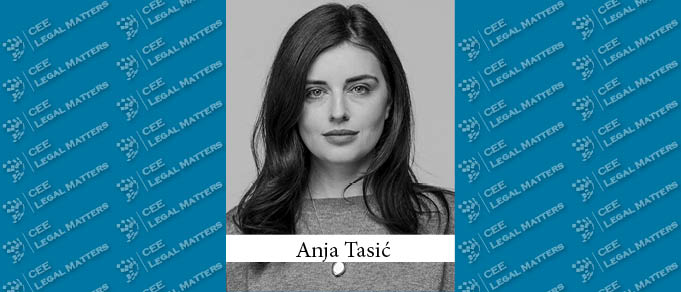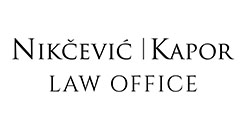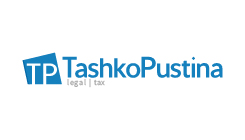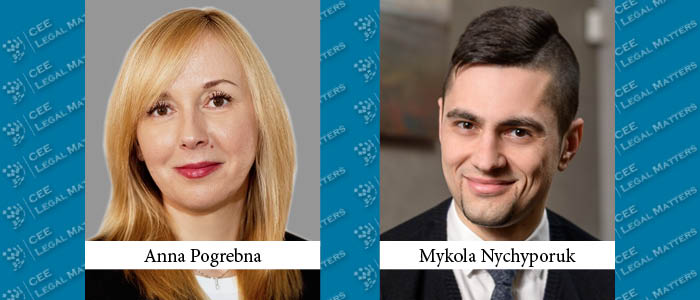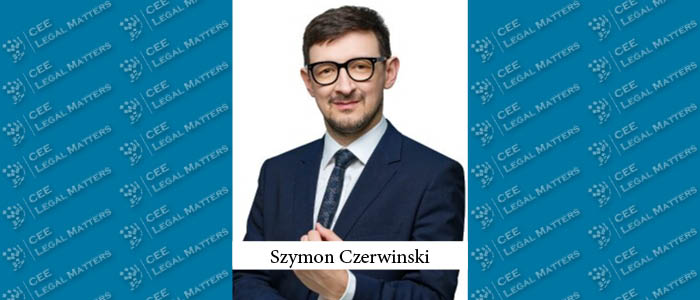During the first half of 2022 the Commission for Protection of Competition of the Republic of Serbia ("Commission") has been very proactive with respect to prevention of competition infringements. As a result of these efforts, in May the Commission also adopted a new Instruction for detecting bid rigging in public procurement procedures ("Instruction") thereby updating the older version of the Instruction from 2011.
The Instruction aims to prevent bid rigging by helping market participants recognize bid rigging, encouraging market participants to report potential bid rigging and advising market participants on how to reduce the risk of bid rigging in public procurement procedures. The Instruction relies heavily on the ОECD’s Guidelines for fighting bid rigging in public procurement.
1. Introduction
Bid rigging is one of the most flagrant violations of competition law which occurs when competing market participants secretly and jointly coordinate their actions in public procurement procedures. It can take different forms, most commonly manifesting in an agreement of the bidders on who would be the tender winner. Bid rigging deals however do not have to be made in a specific form to represent competition infringements – bid rigging may stem from an oral agreement, from informal contacts or information exchange between competitors too.
To achieve their plans, bidders may agree to take turns in submitting the lowest bid, they may choose participants who will not submit the bid at all or will intentionally submit an uncompetitive bid, etc. The effects of bid rigging are harmful both to the contracting entity and to final consumers as they result in higher prices and lower quality of products or services. Rigging of bids is also detrimental to the public budget and in turn harms all taxpayers.
Sanctions for bid rigging can be very radical. Competition law rules allow for fines in the amount of up to 10% of the total annual revenue the infringing party generated in Serbia, as well as a prohibition to participate in public procurements for two years. Bid rigging is also a criminal offence.
Bid rigging is very high on the Commission’s list of enforcement priorities. Together with resale price maintenance cases, bid rigging is the most common type of restrictive agreement investigated by the Commission. Complaints that trigger the opening of investigations by the Commissions often come directly from the contracting entities that are, by the looks of it, well equipped to recognize the rigging, especially when it takes some of the less sophisticated forms.
One of the Commission’s most notable bid rigging case involved eight participants, including Konica Minolta and Birotehnika and lead to fines of a total of around EUR 500,000, ranging from 3.21% to 7.55% of the annual turnover of the parties. The parties coordinated their participation in public and private procurement procedures for office equipment and provision of office machine repairs with the goal of Konica Minolta’s equipment always winning the bid. To do this, they typically used the bid suppression strategy whereby some of the parties refrained from bidding or withdrew their bids to make Konica Minolta’s bid the winning one. This case was triggered by the first leniency application in a cartel case – the bid rigging scheme was made known to the Commission by Birotehnika for which Birotehnika received a full immunity from the fine.
With the improved Instruction, an uptick of bid rigging related complaints and investigations could be expected in the upcoming period.
2. Typical forms of bid rigging
Strategies for bid rigging are numerous and are often developed in a subtle way to make the contracting entities believe that it is really purchasing the products/services at the lowest price. These strategies usually also uncover the motives behind the competitors’ willingness to take part in bid rigging – they involve mechanisms which guarantee that non-winning bidders also profit from the scheme. For example, competitors who agree not to bid or to submit a losing bid may be selected as the winning bidder’s subcontractor, splitting the profit made from the selected bid.
Some of the most common techniques of bid rigging are the following:
1. simulated / fictitious bid is the most common form of bid rigging; it is designed to give the appearance of genuine competition and it occurs when bidders agree to submit bids which have one of the following characteristics:
a bid is higher than the bid of the designated winner;
- a bid which is unjustifiably high and therefore will certainly not be accepted; or
- a bid contains special terms that are known to be unacceptable to the contracting entity;
2. bid suppression involves agreements among competitors in which one or more competitors agree to refrain from bidding or to withdraw a previously submitted bid so that the designated winner’s bid is accepted;
3. bid rotation means that competitors participate in the tenders, but they agree that each time some other competitor will be the winner; and
4. market allocation is a situation where competitors share the market and agree not to compete for certain customers or in certain geographic areas.
3. Bid rigging indicators
During the previous years, the Commission has concluded that certain industries are more likely to be exposed to bid rigging due to their characteristics. Having this in mind, contracting entities active on markets with the following features should be wary of an increased risk of potential bid rigging:
- small number of bidders means that there is a higher chance of competitors making a bid-rigging deal;
- barriers to entry help companies which are already in the market as they are protected from potential new competitive pressure and can stick to their bid-rigging agreements;
- predictable demand / supply conditions are convenient for concluding bid-rigging agreements;
- economic disturbances / uncertainties elevate the risk of bid-rigging agreements, since companies tend to cover their losses by concluding bid-rigging agreements (hence, the contracting entities should be careful in the months or even years following the disturbance);
- trade associations can be used by their members to meet and discuss about concluding bid-rigging agreements;
- repetitive bidding increases the risk of bid-rigging agreements since it helps conspirators allocate the agreements between them and punish the conspirator who does not comply with the bid-rigging agreement; in addition, they establishes predictable behaviour patterns which facilitates collusion;
- identical or similar products or services help competitors to agree on a rigged price more easily;
- few possible substitutes is a market feature that can benefit a bid rigging scheme in the same way as barriers to entry; and
- little or no technological change helps competitors make a successful long-term bid-rigging strategy.
4. Detecting bid rigging
The aforementioned indicators serve only as a first step in helping identify potential bid rigging. Therefore, in the Instruction the Commission has also listed concrete practices which represent signs of probable bid rigging. These practices have to do with (i) unusual activities during a public procurement, (ii) suspicious documents, (iii) suspicious prices, (iv) suspicious statements and (v) suspicious behaviour. The Commission has instructed contracting entities to notify the Commission whenever they notice the following odd patterns.
Unusual activities during a public procurement:
- the same bidder is always the lowest bidder;
- some bidders are active only in certain geographic areas;
- regular bidder fails to bid on a tender it would normally be expected to bid for;
- some bidders unexpectedly and suddenly withdraw from bidding;
- certain bidders always submit bids but never win;
- two or more bidders submit a joint bid even though at least one of them could have bid on its own;
- the winning bidder subcontracts work to unsuccessful bidders without reporting this;
- the winning bidder does not accept the contract and is later found to be a subcontractor; and
- competitors regularly hold meetings shortly before the deadline for bid submission.
Suspicious documents:
- identical technical mistakes (typos, etc.) in the documents submitted by different bidders;
- documents of different bidders submitted from the same IP address; and
- bids from different bidders contain a significant number of identical estimates of costs or identical calculation mistakes.
Suspicious prices:
- sudden or identical increases in price by bidders that cannot be explained by cost increases;
- anticipated discounts or rebates are unexpectedly retracted;
- a large difference between the price of a winning bid and other bids;
- a certain bid contains a price that is much higher than the price for the same or similar contract;
- a bid from a new bidder or infrequent bidder contains a significantly reduced price;
- local bidders are bidding higher prices for local delivery than for distant locations; and
- similar transportation costs are specified by local and non-local companies.
In addition to this, identical prices are especially alarming in the following cases:
- bidders’ prices were the same for a long period of time;
- bidders’ prices were previously different from one another;
- bidders’ increased price is not justified by increased costs; and
- bidders eliminated discounts, especially in a market where discounts were historically given.
Suspicious statements:
- bidders justify their prices by stating that they reflect the recommended market price or that they are standard market price;
- indications that certain companies do not sell in a particular area or to particular customers;
- indications that an area or a customer belongs to another bidder;
- indications that a bidder submitted a courtesy, cover or a symbolic bid; and
- usage of the same terminology by various bidders when explaining price increases.
Suspicious behaviour:
- bidders meet privately before submitting bids, sometimes even at the location where bids are to be submitted;
- bidders participate in the same event;
- a bidder submits accompanying documentation for a number of bidders;
- a bidder is a market participant from whom it cannot be reasonably expected to successfully complete the contract; and
- a potential bidder brings multiple bids to a bid opening and chooses which bid to submit after determining or assuming who else is bidding.
5. Reducing the risk of bid rigging
In order to promote fruitful and competition-oriented public procurement, the Instruction also contains a number of Commission’s suggestions aimed at contracting entities for designing public procurement procedures that alleviate the risk of bid rigging. The most important and interesting ones are listed below.
First and foremost, contracting entities should be well informed on the types of products/services available on the relevant market and potential suppliers (ie, bidders) before designing public procurement procedures. They should be familiar with prices and recent changes of prices, characteristics of the market, previous similar public procurements, etc.
Contracting entities should tend to organize the tender in a way that attracts as much bidders as possible. Small number of bidders means that there is a higher chance of competitors making a bid-rigging deal. To make this happen, they should not set up strict limitations and requirements for taking part in the tender. Instead, they should lower the costs of bid preparation and, if possible, let smaller companies compete for some parts of the contract too.
Contracting entities should explain in detail what they aim to get from the public procurement and should define the conditions and requirements for participation as clearly as possible. The reason is that the Commission concluded that detailed requirements and explanations make public procurements seem more legitimate and attractive to potential bidders.
The criteria for evaluating and awarding the contract should also be defined in a clear and careful way. This has a positive effect on intensity and efficiency of competition and it attracts credible bidders.
Contracting entities should also aim to reduce communication among bidders. In this respect, they should have meetings with potential bidders separately and use electronic bidding instead of in-person bid submission. When publishing tender results, contracting entities should carefully consider which information is published and should avoid disclosing competitively sensitive information as this can aid the conclusion of bid-rigging agreements in the future. In addition, contracting entities should be wary when engaging consultants to conduct a public procurement procedure, as they may have established working relationships with some of the other bidders.
Last but not the least, contracting entities should raise awareness among employees about the risks of bid rigging. This can be done by implementing a regular training program on bid rigging and cartel detection, appointing a person responsible for receiving complaints regarding public procurement procedures, establishing internal procedures that encourage or require officials to report suspicious statements and behaviour to the Commission, etc.
6. Notes for bidders
The Instruction’s primary function is to assist contracting entities recognize bid rigging and flag any suspicious behaviour to the Commission, but bidders should also pay careful attention to them.
Companies that take part in public tenders should be wary of the types of behaviour and practices that may be suspicious to contracting entities and should aim to avoid them as even the behaviour that is in essence benign can prima facie raise concerns and lead to scrutiny of the authorities. This is especially important in case of contacts with other bidders or discussions on bid related information.
Companies can also use the Instruction to educate their employees and encourage them to learn more about the risks of bid rigging, its typical forms, indicators, etc, as part of internal compliance processes.
By Anja Tasic, Partner, Radovanovic Stojanovic & Partners

